15Bilder
Eine Reihe von Kfz-Zubehör. Ersatzrad, Brandschutz, Feuerlöscher,
Ein Satz Kfz-Zubehör. Ersatzrad, Feuerlöscher, Erste-Hilfe-Kasten, Notfallwarndreieck, Wagenheber, Abschleppseil, Radschlüssel, Pumpe. Objekte, die auf weißem Hintergrund isoliert sind. 3d
motorrad-stoßdämpfer und rad, 3d render - tyre cross section stock-fotos und bilderMotorrad-Stoßdämpfer und Rad, 3d render
zugeschnittenen schuss von jungen afro-amerikanischen sportler sitzen reifen und holding flasche wasser im fitness-studio - tyre cross section stock-fotos und bilderzugeschnittenen Schuss von jungen Afro-amerikanischen Sportler. ..
Mountainbike Fahrrad-Rad. Realistische 3D Vektor-Illustration
close-up teilansicht der sportler im fitness-studio fitness-studio trainieren trainieren - tyre cross section stock-fotos und bilderClose-up Teilansicht der Sportler im Fitness-Studio Fitness-Studio
reifen von motocross bike - tyre cross section stock-fotos und bilderReifen von motocross bike
motorrad-rad und wand, 3d render - tyre cross section stock-fotos und bilderMotorrad-Rad und Wand, 3d render
Motorradrad und -wand, 3D-Renderarbeiten
zugeschnittenen schuss von afrikanischer amerikanischer sportler sitzen in reifen und talkum-puder auf händen anwenden - tyre cross section stock-fotos und bilderzugeschnittenen Schuss von afrikanischer amerikanischer Sportler...
junge sportler trainieren mit großem reifen beim fitnesstraining - tyre cross section stock-fotos und bilderJunge Sportler trainieren mit großem Reifen beim Fitnesstraining
reifen von motocross bike - tyre cross section stock-fotos und bilderReifen von motocross bike
fahrradreifen, realistische vektor-illustration - tyre cross section stock-grafiken, -clipart, -cartoons und -symboleFahrradreifen, realistische Vektor-Illustration
Fahrradreifen, realistische Vektorillustration.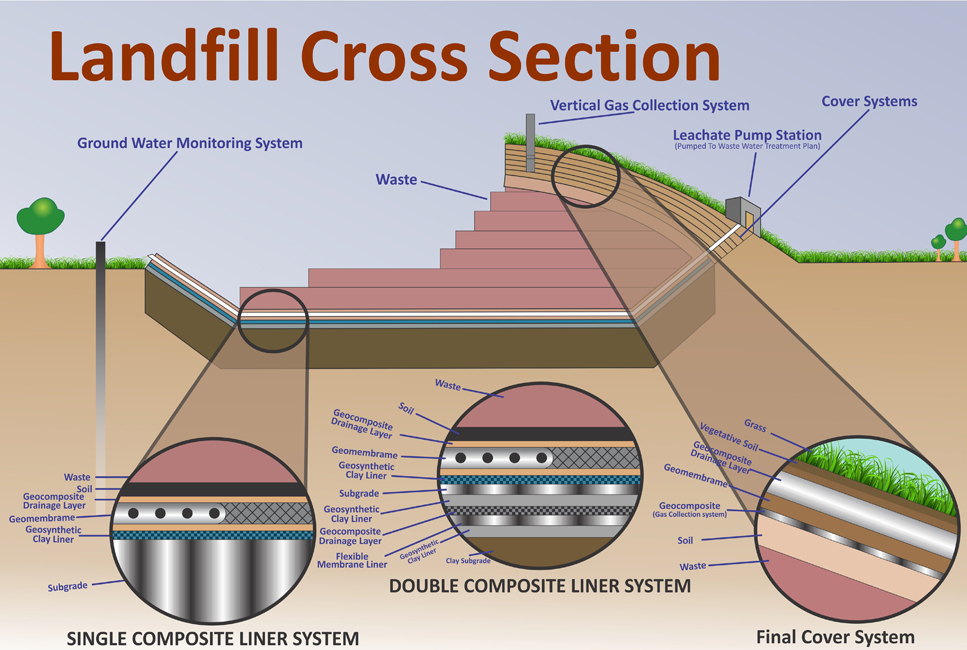 3D-Fahrradreifen, Blanko-Ersatzteil isoliert auf Weiß.
3D-Fahrradreifen, Blanko-Ersatzteil isoliert auf Weiß.
Mountainbike Fahrrad-Rad mit beispielhaften Branding....
Mountainbike-Rad. Realistische 3D-Vektorillustration. Beispieltext, beispielhaftes Branding. Scheibenbremsscheibe.
vektor-fahrradreifen, vorlage für die werbung mit einem beispiel für text-layout - tyre cross section stock-grafiken, -clipart, -cartoons und -symboleVektor-Fahrradreifen, Vorlage für die Werbung mit einem Beispiel...
Fahrradreifen, Vorlage für Werbung mit einem Beispiel für Textlayout. Realistische Vektorillustration
mountainbike fahrrad-rad mit polierten felgen. realistische 3d vektor-illustration - tyre cross section stock-grafiken, -clipart, -cartoons und -symboleMountainbike Fahrrad-Rad mit polierten Felgen.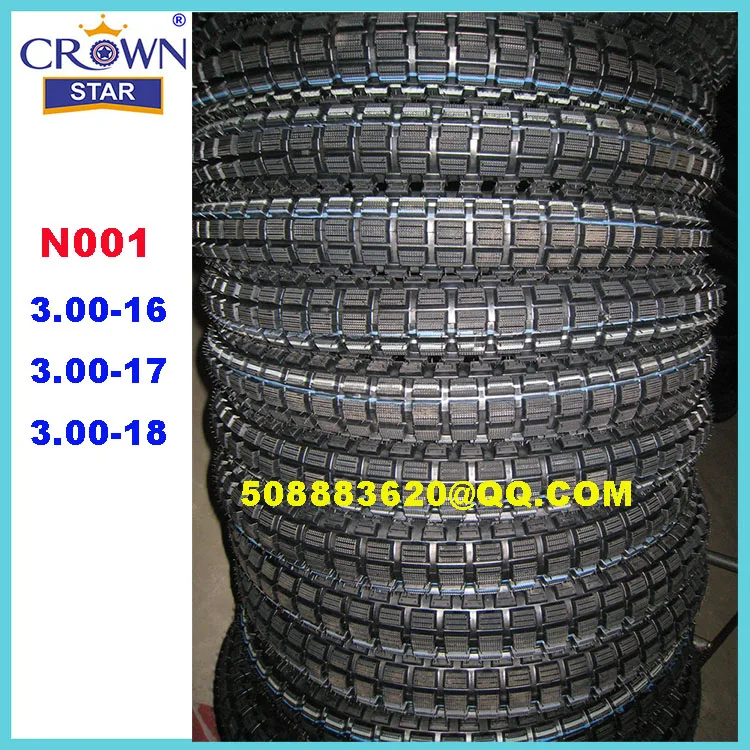 Realistische 3D...
Realistische 3D...
Mountainbike-Rad mit polierten Felgen. Realistische 3D-Vektorillustration.
motorrad-rad auf weiße, 3d rendern - tyre cross section stock-fotos und bilderMotorrad-Rad auf weiße, 3d Rendern
Motorradrad auf weiß, 3D-Render-Arbeit
von 1Modern transportation, as advanced as it is, has been rolling on an invention that traces its roots back some 5,500 years, the invention of the wheel. Over the intervening centuries, the wheel has been reinvented many times, and today is the most-common mode of transportation on the planet, after “feet.” Originally, wheels were solid wood, but spokes made them lighter. Later, wheels were “attired” with leather, iron, or steel, to improve lifespan and durability. Eventually, with the invention of the air-filled rubber tire, over a century ago, wheels could last longer, deliver better traction, and ride softer.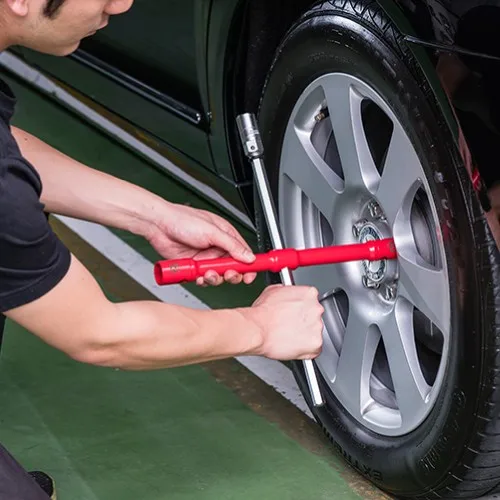
From your kid’s 12” bicycle to 14’ mining tires, weighing more than 6 tons each, tires are everywhere, and near 2 billion are produced worldwide every year. On your car or truck, whether you’re commuting to work or transporting family, friends, tools, or products, having the right tires in good condition makes for safe and comfortable travels year-round. Still, what exactly is a tire? How are they made? How do you know what tires to put on your ride?
From the outside, a tire might be mistaken for a rugged air-filled black rubber donut, but there’s more going on under the surface than meets the eye. In fact, unless you cut one apart, you would never see what’s really under the skin. Of course, we don’t recommend you cut open yours, so here’s a sample.
As you can see, there are multiple layers making up the average tire, rubber being just the most obvious. At the core of each tire are multiple layers of nylon and steel, giving it strength and shape.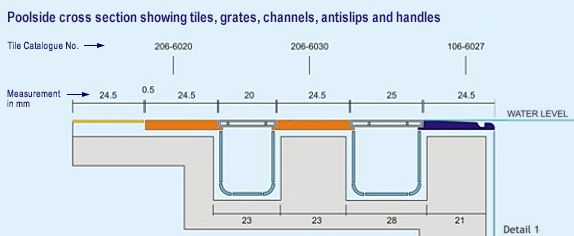 Without the steel belts and nylon body plies, the rubber would not hold its shape once pressurized. The body plies are wrapped around the steel bead wires, maintaining the inner diameter to keep the tire on the wheel. In construction, the bead wires, filler rubber, body plies, and steel belts form the basis for what is known as the carcass, but more is needed before this assembly can be called a tire.
Without the steel belts and nylon body plies, the rubber would not hold its shape once pressurized. The body plies are wrapped around the steel bead wires, maintaining the inner diameter to keep the tire on the wheel. In construction, the bead wires, filler rubber, body plies, and steel belts form the basis for what is known as the carcass, but more is needed before this assembly can be called a tire.
The thin inner liner is molded to the carcass, creating a leak-proof (almost) sealed chamber when mounted on the wheel. The sidewall, shoulder, and tread cap are molded to the outside of the carcass. The tread cap is much thicker than the sidewall rubber and is molded with a tread pattern based on its intended use. The shoulder is basically a transition area, between the tread cap and the sidewall, and usually has some continuation of the tread pattern, though not as deep. Off-road tires, though, usually feature a more robust shoulder for improved traction in off-road and aired-down situations.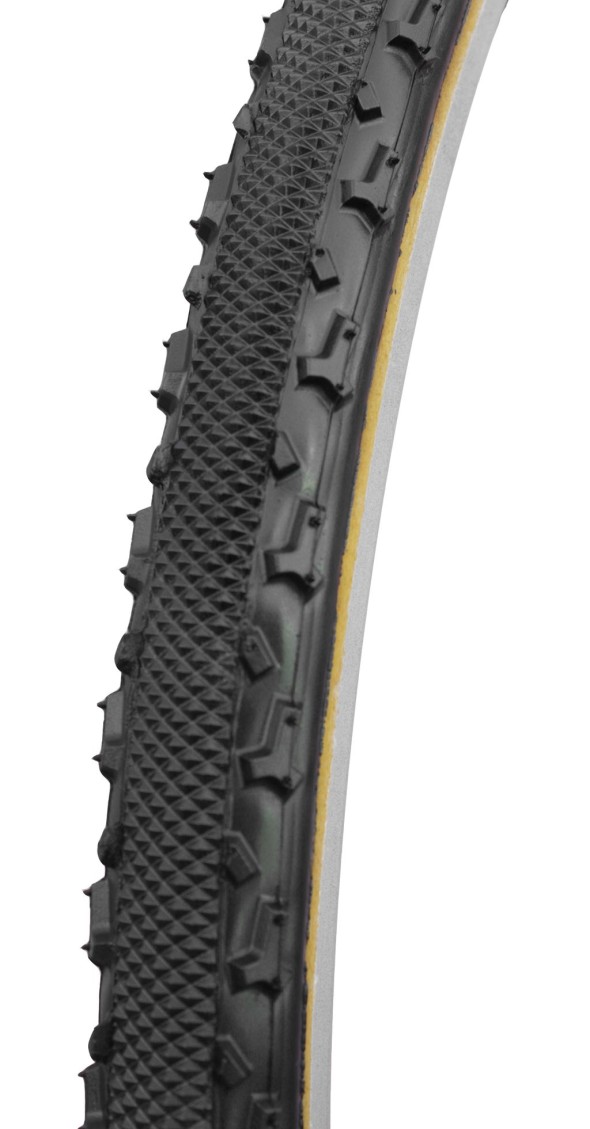
When you buy tires, you might ask for your specific year, make, and model, or you might ask for them by size. Shopping by vehicle usually works, but some vehicles may recommend more than one size, so it’s good to know how tires are measured so you can find the right one for your vehicle or application. Tires are usually sized using one of two standards – passenger-metric and flotation sizes.
P-Metric tires are measured in a combination of tread width in millimeters, aspect ratio, and rim size in inches. For example, the tires on the 2012 Toyota Camry SE V6 Limited are size P225/45R18, which can be broken down as follows:
Flotation, or Light Truck, Tires on the other hand, may be measured as P-Metric tires, using a combination of tread width in millimeters, aspect ratio, and rim size in inches. A 2012 Chevrolet Silverado tire might be sized LT265/70R18, which means:
A 2012 Chevrolet Silverado tire might be sized LT265/70R18, which means:
On the other hand, some flotation tires might be measured by overall diameter, width, and wheel size, all in inches. Off-Road tires for a 2012 Jeep Wrangler Rubicon might be sized 32-1150R15, meaning:
Additionally, there are several tire markings that refer to weight rating, intended season, usage, traction, and wear ratings, to name a few. Here are a few of the most common and what they mean.
 H has 16 plies.
H has 16 plies.If all this information is a little overwhelming, that’s ok. It’s why Dobbs Tire & Auto Centers has been serving the St. Louis area with the best tire services for over forty years. We can help you take the guesswork out of getting the right tires for your car, truck, SUV, season, or planned activities. With 42 locations to serve you, there’s probably a shop near your home, job, or school. Just drop in or give us a call.
When current flows through a conductor, the conductor heats up. The amount of energy released by constant current is determined from the expression:
where
is the amount of heat released, W⋅s; I is the current in the conductor, A; R is the resistance of the conductor, Ohm; t is the current passage time, s.
Part of the generated heat goes to increase the temperature of the conductor, and part is given off to the environment.
Airborne tires are cooled primarily by convection due to air movement near the surface of the conductor. Heat removal by radiation is small due to the relatively low heating temperatures of the conductor. Heat removal due to thermal conductivity is negligible due to the low thermal conductivity of air.
The temperature of the conductor during the passage of current rises until thermal equilibrium is reached, when the heat released in the conductor turns out to be equal to the heat removed from its surface to the environment. The excess of the conductor temperature over the ambient temperature is proportional to the amount of heat generated, and therefore, to the square of the current passing through the conductor for a long time and depends on the conditions of the busbars.
The task of calculating tires for heating usually comes down to determining the current at which the temperature of the conductor does not exceed the permissible value.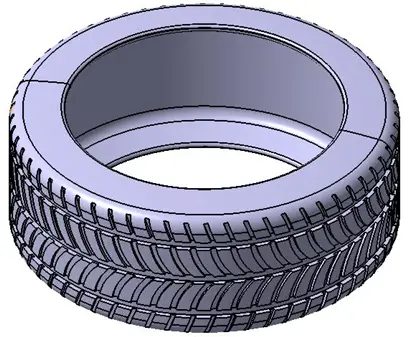 In this case, the permissible heating temperature of the conductor, the conditions for its cooling and the ambient temperature must be known. The maximum allowable tire heating temperature during continuous operation is 70°C. This temperature is generally adopted to ensure the satisfactory operation of the bolt contacts, as a rule, found in busbars. With short-term heating, for example, short-circuit currents. permissible limiting temperatures for copper tires 300°C, for aluminum 200°C. Long-term operation of tires at temperatures exceeding 110°C leads to a significant reduction in their mechanical strength due to annealing. The design ambient temperature for bare conductors according to the current PUE is 25°C.
In this case, the permissible heating temperature of the conductor, the conditions for its cooling and the ambient temperature must be known. The maximum allowable tire heating temperature during continuous operation is 70°C. This temperature is generally adopted to ensure the satisfactory operation of the bolt contacts, as a rule, found in busbars. With short-term heating, for example, short-circuit currents. permissible limiting temperatures for copper tires 300°C, for aluminum 200°C. Long-term operation of tires at temperatures exceeding 110°C leads to a significant reduction in their mechanical strength due to annealing. The design ambient temperature for bare conductors according to the current PUE is 25°C.
The load capacity of the conductor is characterized by a long-term permissible load current, determined from the conditions of its heating at given temperature differences between the conductor and the environment.
Consider the definition of the load capacity of homogeneous bare conductors. At thermal equilibrium, the amount of heat released per unit time by current I in a wire with resistance R is equal to the amount of heat removed to the environment over the same time:
At thermal equilibrium, the amount of heat released per unit time by current I in a wire with resistance R is equal to the amount of heat removed to the environment over the same time:
where
- heat transfer coefficient by convection and radiation (the thermal conductivity of air is low), equal to the amount of heat removed to the environment from the surface of the conductor with a temperature difference between the conductor and the environment; F is the conductor cooling surface, ; — temperature of the conductor and the environment, °C.
If the heating temperature of the conductor is equated to the long-term allowable and the calculated ambient temperature is taken, then from the condition (10-22) it is possible to determine the long-term allowable current:
Thus, under given temperature conditions, the load capacity of the conductor increases with an increase in its cooling surface F, heat transfer coefficient
and a decrease in its electrical resistance.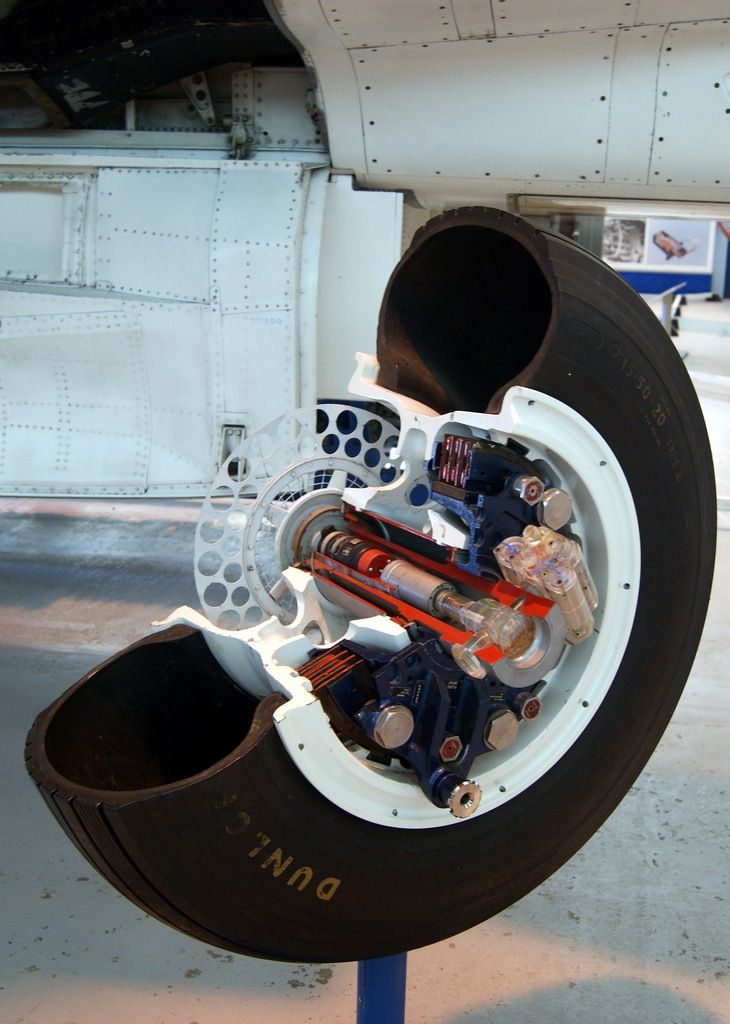
Calculation of long-term permissible currents according to the indicated formulas is quite difficult, therefore, in practical calculations of power networks, ready-made tables of continuous permissible load currents on tires from different materials and under different laying conditions, determined at a long-term permissible ambient temperature, are used. In this regard, checking busbar trunking for heating is reduced to checking the fulfillment of condition
where
is the maximum operating current of the circuit in which the conductor is included; - long-term allowable from the conditions of heating the load current of the busbar.
The presence of the skin effect phenomenon leads to the fact that with alternating current the active resistance is always somewhat greater than with direct current. Therefore, according to the formula (10-23), all other things being equal, the permissible load current of the conductor with alternating current is somewhat less than with direct current..jpg) This phenomenon is most significant for a solid section of the busbar, for example, a busbar with a rectangular cross section.
This phenomenon is most significant for a solid section of the busbar, for example, a busbar with a rectangular cross section.
Sometimes tubular busbars are used. Uncut pipes use metal located only on the surface of the section, as a result of which the increase in resistance from the skin effect is small and the allowable loads at direct and alternating currents are approximately the same.
In installations of all voltages, rigid busbars are painted with colored enamel paints. In addition to making it easier to navigate and prevent tire corrosion, painting also affects the tire's load capacity. The constant radiation of painted tires is much greater than that of unpainted tires, so the cooling of the tires by radiation is improved, which in turn leads to an increase in the load capacity of the tires. Under constant temperature conditions, the permissible load current of painted tires is 12-15% more than that of unpainted ones.
The largest aluminum bar of rectangular section 120x10 mm sq.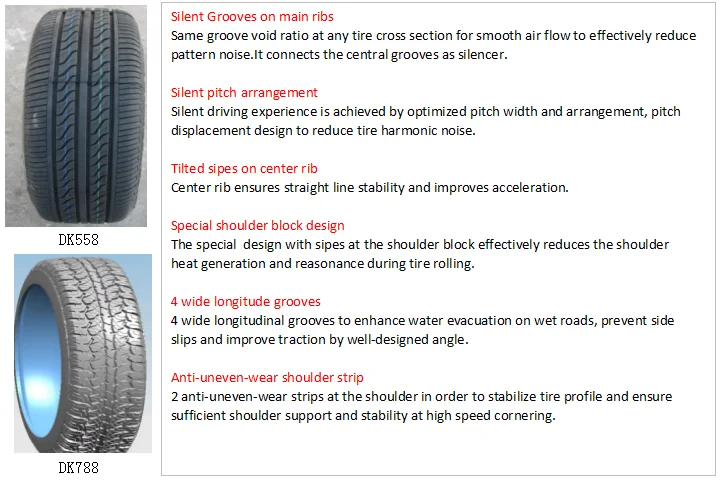 has a long-term permissible current at alternating current, equal to 2070 A. At a higher load current, several strips are used per phase, assembled in a common package and fixed together on support insulators. The distance between the strips in the package is normally the thickness of one strip, which is necessary to cool the tire in the package. With an increase in the number of strips per phase, the allowable load increases disproportionately to the number of strips in the package. With alternating current, in addition, the effect of proximity also affects (for more details, see the section). All this leads to the fact that the load capacity of a package of several tires is less than the total load capacity of the same number of identical tires of the same size.
has a long-term permissible current at alternating current, equal to 2070 A. At a higher load current, several strips are used per phase, assembled in a common package and fixed together on support insulators. The distance between the strips in the package is normally the thickness of one strip, which is necessary to cool the tire in the package. With an increase in the number of strips per phase, the allowable load increases disproportionately to the number of strips in the package. With alternating current, in addition, the effect of proximity also affects (for more details, see the section). All this leads to the fact that the load capacity of a package of several tires is less than the total load capacity of the same number of identical tires of the same size.
To ensure that the operating conditions do not exceed the allowable voltage losses, busbar trunkings are calculated according to voltage losses, as described in the section.
Permissible continuous currents for painted bars are shown in the tables below.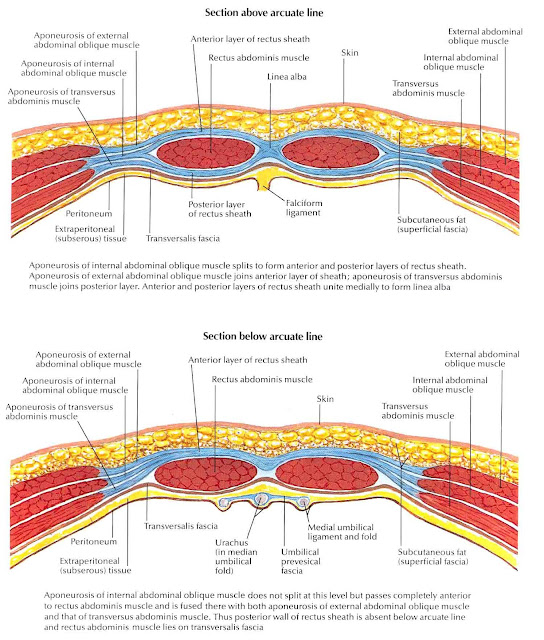 They are taken based on the allowable temperature of their heating + 70 °C at an air temperature of +25 °C.
They are taken based on the allowable temperature of their heating + 70 °C at an air temperature of +25 °C.
When rectangular busbars are placed flat, the currents given in the table for rectangular busbars must be reduced by 5% for busbars with strip widths up to 60 mm and by 8% for busbars with strip widths over 60 mm.
When choosing busbars of large cross-sections, it is necessary to choose the most economical design solutions in terms of throughput, providing the smallest additional losses from the surface effect and the proximity effect and the best cooling conditions (reducing the number of strips in the package, rational package design, the use of profile tires, etc. ).
| Permissible continuous current for round and tubular bars | |||||||||||||||||||||||||||||||||||||||||||||||||||||||||||||||||||||||||||||||||||||||||||||||||||||||||||||||||||||||||||||||||||||||||||||||||||||||||||||||||||||||||||||||||||||||||||||||||||||||||||||||||||||||||||||||||||||||||||||||||||||||||||||||||||||||||||||||||||||||||||||||||||||||||||||||||||||||||||||||||||||||||||||||||||||||||||||||||||||||||||||||||||||||||||||||||||||||||||||||||||||||||||||||||||||||||||||||||||||||||||||||||||||
|---|---|---|---|---|---|---|---|---|---|---|---|---|---|---|---|---|---|---|---|---|---|---|---|---|---|---|---|---|---|---|---|---|---|---|---|---|---|---|---|---|---|---|---|---|---|---|---|---|---|---|---|---|---|---|---|---|---|---|---|---|---|---|---|---|---|---|---|---|---|---|---|---|---|---|---|---|---|---|---|---|---|---|---|---|---|---|---|---|---|---|---|---|---|---|---|---|---|---|---|---|---|---|---|---|---|---|---|---|---|---|---|---|---|---|---|---|---|---|---|---|---|---|---|---|---|---|---|---|---|---|---|---|---|---|---|---|---|---|---|---|---|---|---|---|---|---|---|---|---|---|---|---|---|---|---|---|---|---|---|---|---|---|---|---|---|---|---|---|---|---|---|---|---|---|---|---|---|---|---|---|---|---|---|---|---|---|---|---|---|---|---|---|---|---|---|---|---|---|---|---|---|---|---|---|---|---|---|---|---|---|---|---|---|---|---|---|---|---|---|---|---|---|---|---|---|---|---|---|---|---|---|---|---|---|---|---|---|---|---|---|---|---|---|---|---|---|---|---|---|---|---|---|---|---|---|---|---|---|---|---|---|---|---|---|---|---|---|---|---|---|---|---|---|---|---|---|---|---|---|---|---|---|---|---|---|---|---|---|---|---|---|---|---|---|---|---|---|---|---|---|---|---|---|---|---|---|---|---|---|---|---|---|---|---|---|---|---|---|---|---|---|---|---|---|---|---|---|---|---|---|---|---|---|---|---|---|---|---|---|---|---|---|---|---|---|---|---|---|---|---|---|---|---|---|---|---|---|---|---|---|---|---|---|---|---|---|---|---|---|---|---|---|---|---|---|---|---|---|---|---|---|---|---|---|---|---|---|---|---|---|---|---|---|---|---|---|---|---|---|---|---|---|---|---|---|---|---|---|---|---|---|---|---|---|---|---|---|---|---|---|---|---|---|---|---|---|---|---|---|---|---|---|---|---|---|---|---|---|---|---|---|---|---|---|---|---|---|---|---|---|---|---|---|
| diameter, mm | Round buses | Copper pipes | Aluminum pipes | steel pipes | |||||||||||||||||||||||||||||||||||||||||||||||||||||||||||||||||||||||||||||||||||||||||||||||||||||||||||||||||||||||||||||||||||||||||||||||||||||||||||||||||||||||||||||||||||||||||||||||||||||||||||||||||||||||||||||||||||||||||||||||||||||||||||||||||||||||||||||||||||||||||||||||||||||||||||||||||||||||||||||||||||||||||||||||||||||||||||||||||||||||||||||||||||||||||||||||||||||||||||||||||||||||||||||||||||||||||||||||||||||||||||||||||
| current*, and | internal and external diameters, mm | current, and | in the inside. and outer diameter, mm and outer diameter, mm | Current, A | Nominal diameter, mm | Wall thickness, mm | Outer diameter, mm | AC, A | |||||||||||||||||||||||||||||||||||||||||||||||||||||||||||||||||||||||||||||||||||||||||||||||||||||||||||||||||||||||||||||||||||||||||||||||||||||||||||||||||||||||||||||||||||||||||||||||||||||||||||||||||||||||||||||||||||||||||||||||||||||||||||||||||||||||||||||||||||||||||||||||||||||||||||||||||||||||||||||||||||||||||||||||||||||||||||||||||||||||||||||||||||||||||||||||||||||||||||||||||||||||||||||||||||||||||||||||||||||||||||||
| copper | 0087 without incision | with longitudinal permission | |||||||||||||||||||||||||||||||||||||||||||||||||||||||||||||||||||||||||||||||||||||||||||||||||||||||||||||||||||||||||||||||||||||||||||||||||||||||||||||||||||||||||||||||||||||||||||||||||||||||||||||||||||||||||||||||||||||||||||||||||||||||||||||||||||||||||||||||||||||||||||||||||||||||||||||||||||||||||||||||||||||||||||||||||||||||||||||||||||||||||||||||||||||||||||||||||||||||||||||||||||||||||||||||||||||||||||||||||||||||||||||||||||
| 6 | 155/155 | 120/120 | 12/15 | 340 | 13/16 | 295 | 2, 8 | 13.5 | - | ||||||||||||||||||||||||||||||||||||||||||||||||||||||||||||||||||||||||||||||||||||||||||||||||||||||||||||||||||||||||||||||||||||||||||||||||||||||||||||||||||||||||||||||||||||||||||||||||||||||||||||||||||||||||||||||||||||||||||||||||||||||||||||||||||||||||||||||||||||||||||||||||||||||||||||||||||||||||||||||||||||||||||||||||||||||||||||||||||||||||||||||||||||||||||||||||||||||||||||||||||||||||||||||||||||||||||||||||||||||||||||
| 7 | 195/195 | 150/150/150 | 14/18 | 460 | /20 | 17 | 90 | - | |||||||||||||||||||||||||||||||||||||||||||||||||||||||||||||||||||||||||||||||||||||||||||||||||||||||||||||||||||||||||||||||||||||||||||||||||||||||||||||||||||||||||||||||||||||||||||||||||||||||||||||||||||||||||||||||||||||||||||||||||||||||||||||||||||||||||||||||||||||||||||||||||||||||||||||||||||||||||||||||||||||||||||||||||||||||||||||||||||||||||||||||||||||||||||||||||||||||||||||||||||||||||||||||||||||||||||||||||||||||||||||
| 8 | 235/235 | 180/180 | 16/20 | 505 | 18/22 | 425 | 15 | 3.2 | 21.3 -|||||||||||||||||||||||||||||||||||||||||||||||||||||||||||||||||||||||||||||||||||||||||||||||||||||||||||||||||||||||||||||||||||||||||||||||||||||||||||||||||||||||||||||||||||||||||||||||||||||||||||||||||||||||||||||||||||||||||||||||||||||||||||||||||||||||||||||||||||||||||||||||||||||||||||||||||||||||||||||||||||||||||||||||||||||||||||||||||||||||||||||||||||||||||||||||||||||||||||||||||||||||||||||||||||||||||||||||||||||||||||||
| 10 | 320/ | ||||||||||||||||||||||||||||||||||||||||||||||||||||||||||||||||||||||||||||||||||||||||||||||||||||||||||||||||||||||||||||||||||||||||||||||||||||||||||||||||||||||||||||||||||||||||||||||||||||||||||||||||||||||||||||||||||||||||||||||||||||||||||||||||||||||||||||||||||||||||||||||||||||||||||||||||||||||||||||||||||||||||||||||||||||||||||||||||||||||||||||||||||||||||||||||||||||||||||||||||||||||||||||||||||||||||||||||||||||||||||||||||||||
| 12 | 415/415 | 320/ | 390/ | 435/435 | 25/30 | 830 | 36/40 | 765 | 40 | 4,0 | 48 | 255 | - | ||||||||||||||||||||||||||||||||||||||||||||||||||||||||||||||||||||||||||||||||||||||||||||||||||||||||||||||||||||||||||||||||||||||||||||||||||||||||||||||||||||||||||||||||||||||||||||||||||||||||||||||||||||||||||||||||||||||||||||||||||||||||||||||||||||||||||||||||||||||||||||||||||||||||||||||||||||||||||||||||||||||||||||||||||||||||||||||||||||||||||||||||||||||||||||||||||||||||||||||||||||||||||||||||||||||||||||||||||||||||
| 16 | 610/615 | 475/475 | 29/34 | 925 | 35/40 | 850 | 50 | 4. | 60 | 320 | - | ||||||||||||||||||||||||||||||||||||||||||||||||||||||||||||||||||||||||||||||||||||||||||||||||||||||||||||||||||||||||||||||||||||||||||||||||||||||||||||||||||||||||||||||||||||||||||||||||||||||||||||||||||||||||||||||||||||||||||||||||||||||||||||||||||||||||||||||||||||||||||||||||||||||||||||||||||||||||||||||||||||||||||||||||||||||||||||||||||||||||||||||||||||||||||||||||||||||||||||||||||||||||||||||||||||||||||||||||||||||||||
| 1S | 720/725 | 560/560 | 35/45 35/45/45 35/45/11 45 | 935 | 65 | 4.5 | 75.5 | 390 | - | ||||||||||||||||||||||||||||||||||||||||||||||||||||||||||||||||||||||||||||||||||||||||||||||||||||||||||||||||||||||||||||||||||||||||||||||||||||||||||||||||||||||||||||||||||||||||||||||||||||||||||||||||||||||||||||||||||||||||||||||||||||||||||||||||||||||||||||||||||||||||||||||||||||||||||||||||||||||||||||||||||||||||||||||||||||||||||||||||||||||||||||||||||||||||||||||||||||||||||||||||||||||||||||||||||||||||||||||||||||||||||||
| 19 | 780/785 | 605/610 | 40/45 | 45/50 45/50 45/50 45/50 45/50 45/50 957 45/50 957 45/50 957 45/50 957 45/50 45/50 | 45/50 | 45/50 | 45/50 | 45/50 | 45/50 | 45/50 | 45/50 | 45/50 | 4.5 | 88.5 | 455 | - | |||||||||||||||||||||||||||||||||||||||||||||||||||||||||||||||||||||||||||||||||||||||||||||||||||||||||||||||||||||||||||||||||||||||||||||||||||||||||||||||||||||||||||||||||||||||||||||||||||||||||||||||||||||||||||||||||||||||||||||||||||||||||||||||||||||||||||||||||||||||||||||||||||||||||||||||||||||||||||||||||||||||||||||||||||||||||||||||||||||||||||||||||||||||||||||||||||||||||||||||||||||||||||||||||||||||||||||||||||||
| 20 | 835/840 | 650/655 | 45/50 | 1330 | 50/5550/550/550 | 5.0 | 114 | 670 | 770 | ||||||||||||||||||||||||||||||||||||||||||||||||||||||||||||||||||||||||||||||||||||||||||||||||||||||||||||||||||||||||||||||||||||||||||||||||||||||||||||||||||||||||||||||||||||||||||||||||||||||||||||||||||||||||||||||||||||||||||||||||||||||||||||||||||||||||||||||||||||||||||||||||||||||||||||||||||||||||||||||||||||||||||||||||||||||||||||||||||||||||||||||||||||||||||||||||||||||||||||||||||||||||||||||||||||||||||||||||||||||||||||
| 21 | 900/905 | 695/700 | 49/55 | 1580 | 54/60 | 1340 | 125 | 5,5 | 140 | 800 | 890 | ||||||||||||||||||||||||||||||||||||||||||||||||||||||||||||||||||||||||||||||||||||||||||||||||||||||||||||||||||||||||||||||||||||||||||||||||||||||||||||||||||||||||||||||||||||||||||||||||||||||||||||||||||||||||||||||||||||||||||||||||||||||||||||||||||||||||||||||||||||||||||||||||||||||||||||||||||||||||||||||||||||||||||||||||||||||||||||||||||||||||||||||||||||||||||||||||||||||||||||||||||||||||||||||||||||||||||||||||||||||||||
| 22 | 955/965 | 740/745 | 53/60 | 1860 | 64/70 | 1545 | 150 | 5,5 | 165 | 900 | 1000 | ||||||||||||||||||||||||||||||||||||||||||||||||||||||||||||||||||||||||||||||||||||||||||||||||||||||||||||||||||||||||||||||||||||||||||||||||||||||||||||||||||||||||||||||||||||||||||||||||||||||||||||||||||||||||||||||||||||||||||||||||||||||||||||||||||||||||||||||||||||||||||||||||||||||||||||||||||||||||||||||||||||||||||||||||||||||||||||||||||||||||||||||||||||||||||||||||||||||||||||||||||||||||||||||||||||||||||||||||||||||||||
| 25 | 1140/1165 | 885/900 | 62/70 | 2295 | 74/80 | 1770 | - | - | - | - | - | ||||||||||||||||||||||||||||||||||||||||||||||||||||||||||||||||||||||||||||||||||||||||||||||||||||||||||||||||||||||||||||||||||||||||||||||||||||||||||||||||||||||||||||||||||||||||||||||||||||||||||||||||||||||||||||||||||||||||||||||||||||||||||||||||||||||||||||||||||||||||||||||||||||||||||||||||||||||||||||||||||||||||||||||||||||||||||||||||||||||||||||||||||||||||||||||||||||||||||||||||||||||||||||||||||||||||||||||||||||||||||
| 27 | 1270/1290 | 980/1000 | 72/80 | 2610 | 72/80 | 2035 | - | - | - | - | - | ||||||||||||||||||||||||||||||||||||||||||||||||||||||||||||||||||||||||||||||||||||||||||||||||||||||||||||||||||||||||||||||||||||||||||||||||||||||||||||||||||||||||||||||||||||||||||||||||||||||||||||||||||||||||||||||||||||||||||||||||||||||||||||||||||||||||||||||||||||||||||||||||||||||||||||||||||||||||||||||||||||||||||||||||||||||||||||||||||||||||||||||||||||||||||||||||||||||||||||||||||||||||||||||||||||||||||||||||||||||||||
| 28 | 1325/1360 | 1025/1050 | 75/85 | 3070 | 75/85 | 2400 | - | - | - | - | - | ||||||||||||||||||||||||||||||||||||||||||||||||||||||||||||||||||||||||||||||||||||||||||||||||||||||||||||||||||||||||||||||||||||||||||||||||||||||||||||||||||||||||||||||||||||||||||||||||||||||||||||||||||||||||||||||||||||||||||||||||||||||||||||||||||||||||||||||||||||||||||||||||||||||||||||||||||||||||||||||||||||||||||||||||||||||||||||||||||||||||||||||||||||||||||||||||||||||||||||||||||||||||||||||||||||||||||||||||||||||||||
| 30 | 1450/1490 | 1120/1155 | 90/ 95 | 2460 | 90/95 | 1925 | - | - | - | - | - | ||||||||||||||||||||||||||||||||||||||||||||||||||||||||||||||||||||||||||||||||||||||||||||||||||||||||||||||||||||||||||||||||||||||||||||||||||||||||||||||||||||||||||||||||||||||||||||||||||||||||||||||||||||||||||||||||||||||||||||||||||||||||||||||||||||||||||||||||||||||||||||||||||||||||||||||||||||||||||||||||||||||||||||||||||||||||||||||||||||||||||||||||||||||||||||||||||||||||||||||||||||||||||||||||||||||||||||||||||||||||||
| 35 | 1770/1865 | 1370/1450 | 95/100 | 3060 | 90/100 | 2840 | - | - | - | - | - | ||||||||||||||||||||||||||||||||||||||||||||||||||||||||||||||||||||||||||||||||||||||||||||||||||||||||||||||||||||||||||||||||||||||||||||||||||||||||||||||||||||||||||||||||||||||||||||||||||||||||||||||||||||||||||||||||||||||||||||||||||||||||||||||||||||||||||||||||||||||||||||||||||||||||||||||||||||||||||||||||||||||||||||||||||||||||||||||||||||||||||||||||||||||||||||||||||||||||||||||||||||||||||||||||||||||||||||||||||||||||||
| 38 | 1960/2100 | 1510/1620 | - | - | - | - | - | - | - | - | - | ||||||||||||||||||||||||||||||||||||||||||||||||||||||||||||||||||||||||||||||||||||||||||||||||||||||||||||||||||||||||||||||||||||||||||||||||||||||||||||||||||||||||||||||||||||||||||||||||||||||||||||||||||||||||||||||||||||||||||||||||||||||||||||||||||||||||||||||||||||||||||||||||||||||||||||||||||||||||||||||||||||||||||||||||||||||||||||||||||||||||||||||||||||||||||||||||||||||||||||||||||||||||||||||||||||||||||||||||||||||||||
| 40 | 2080/2260 | 1610/1750 | - | - | - | - | - | - | - | -
* The values of the alternating current are given, the vegetative 9, constant
All pages of the section on WebSor 90,000 permissible current for copper tires The calculation of the cross-section of a copper bus for long-term permissible currents must be carried out in accordance with chapter 1.3 of the "Electrical Installation Rules" issued by the USSR Ministry of Energy in 1987. That is, the same PUE 1.3.24, familiar to all electricians " When choosing busbars of large cross-sections, it is necessary to choose the most economical design solutions in terms of throughput, providing the smallest additional losses from the surface effect and the proximity effect and the best cooling conditions (reducing the number of strips in the package, rational package design, the use of profile tires, etc.) .". Based on them, the permissible continuous currents for bare wires and buses are selected. In addition, it is often possible to hear in the electrical engineering environment that this is the current carrying capacity of a copper strip. | |||||||||||||||||||||||||||||||||||||||||||||||||||||||||||||||||||||||||||||||||||||||||||||||||||||||||||||||||||||||||||||||||||||||||||||||||||||||||||||||||||||||||||||||||||||||||||||||||||||||||||||||||||||||||||||||||||||||||||||||||||||||||||||||||||||||||||||||||||||||||||||||||||||||||||||||||||||||||||||||||||||||||||||||||||||||||||||||||||||||||||||||||||||||||||||||||||||||||||||||||||||||||||||||||||||||||||||||||||||||||||